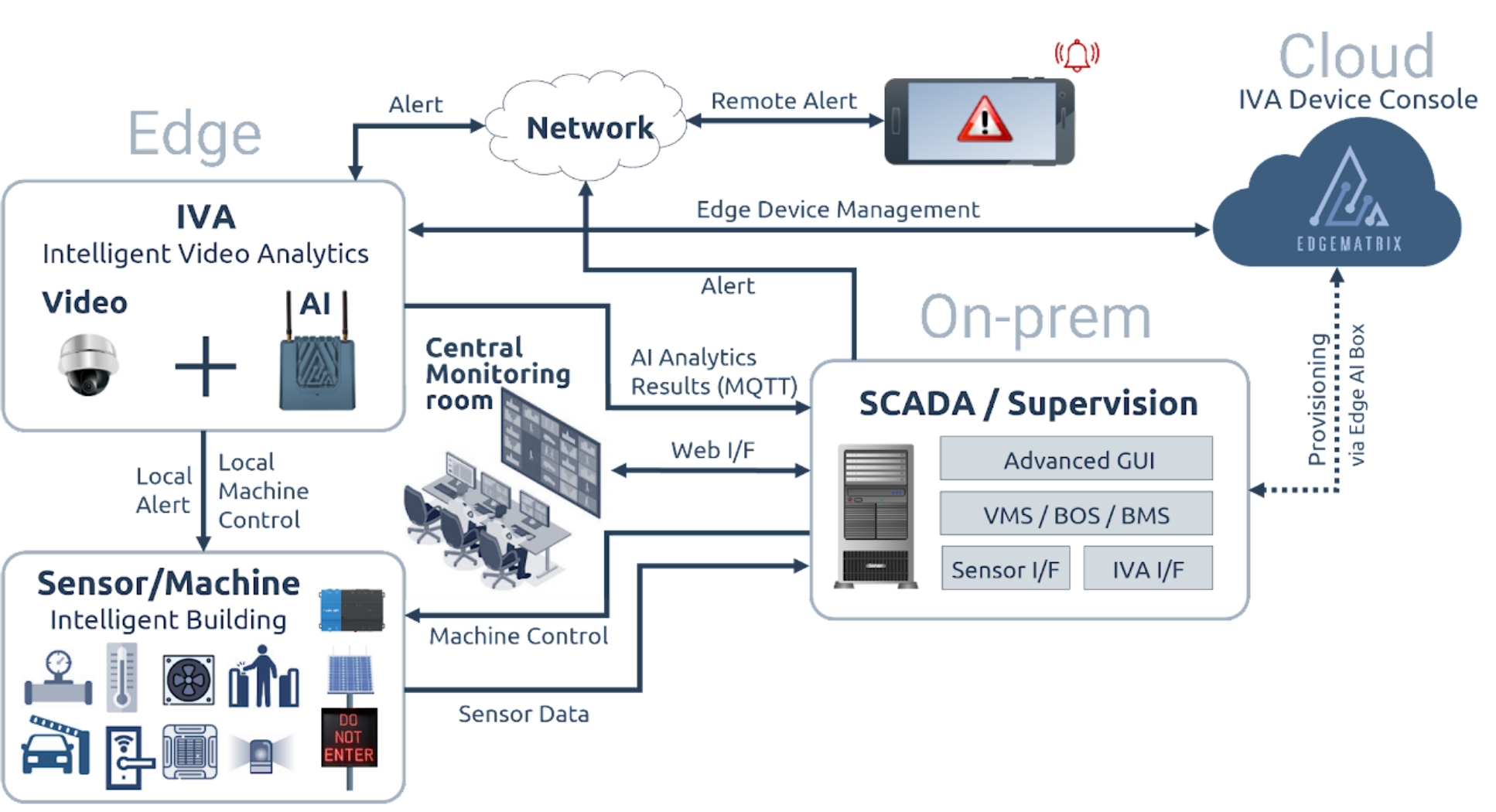- HOME
- AI System
- Ready-Made AI
- Use Case 【Building】
Smart Building
Integrating AI Camera Systems into Building Management Systems
to Improve Convenience and Safety
Smart buildings are essential to the realization of a smart city. In recent years, the trend toward AI smart buildings has begun, combining "intelligent building systems" that control various building facilities (air conditioning, lighting, door locks, parking lot facilities, etc.) and "Video AI."
|Integration with SCADA / Super Vision|
In the case of buildings, monitoring is done in on-premise environments such as central monitoring rooms or fire centers, but the video AI analysis results from the Edge Al Box can be monitored by existing SCADA / Supervision systems.
(Based on our NodeRED-based IVA integration module for BOS)
IVA device console provisioning can be done from the SCADA/Supervision side.
(* A localized (cloud-less appliance) release of the device console functionality is also planned).
The system developed through the PoC will be put into practical use and deployed in the field. We also provide system maintenance and operational support as needed.

|Usage Scenarios|
Grasp the number of people entering and leaving the building
The number of people entering and exiting a building can be measured from the images captured by surveillance cameras at the main entrances and exits of the building, and the difference between the two can be calculated to determine the approximate number of people staying in the building. In use cases where the system is linked to the building OS, the number of people measured at the edge is periodically sent to the building OS, and the floor and number of elevator stops are automatically changed according to threshold values set by the building OS, achieving automation and labor savings in building management.
Identify congestion in common areas such as floors and working spaces
The number of people staying in an area is measured from surveillance camera images of the area where congestion is to be monitored. In use cases where the system is linked to the building OS, the data on the number of people measured at the edge is periodically sent to the building OS, and according to threshold values set by the building OS, lights on the floor are turned off, illumination is reduced, and the temperature and air volume settings of air conditioners are automatically changed to achieve automated building management.
Danger detection within buildings
The system quickly detects risks that may lead to accidents or incidents from camera images and reports them to the building management office. For example, fires in areas where it is difficult to install fire detectors or people entering off-limits areas can be detected from camera images and alerted to security guards before they become serious accidents, thereby preventing accidents from occurring in the first place.

